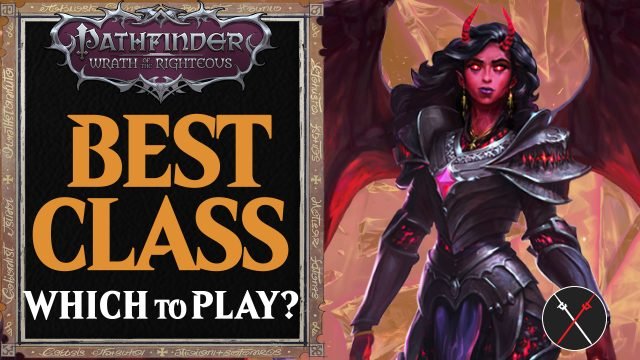In this Pathfinder Wrath of the Righteous article I want to discuss what the Best Class for you is, or how you choose a Class if you’re new to the game. Now that WotR has finally released in full, a lot of people have been asking the questions: “What Class should I play?“, and “What is the best Class for me?“. While it’s not an easy question to answer there are some ways to narrow it down for you.
Pathfinder Wrath of the Righteous | What Class is Best For You?
Much like any RPG, in Pathfinder Wrath of the Righteous the first thing you will need to do in Character Creation is select your Class. How to decide which Class to choose can be extremely overwhelming, even for veterans of the franchise, but a good first step is to think about what sort of character you want to play.
That is to say, do you want to play a Mage character, or a Warrior, or a Rogue, or some sort of Archer? Or maybe you want to play a mix of two or three of these types of playstyles? Regardless of what the answer is, figuring that out is your first step.
Choosing Your Class in Pathfinder Wrath of the Righteous
Once you’ve decided which style of gameplay you prefer, then you can scroll through the Classes of Pathfinder Wrath of the Righteous and look at the “Premade Build Balance” of each. This will show you what that Class focuses on, whether it’s Melee Combat, Ranged Combat, Magic, Support, Defense or Control. Most Classes have a mix of these, but some focus far more on one or two of these aspects.
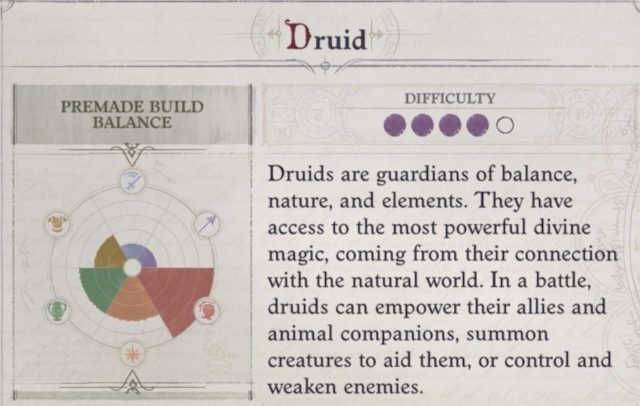
You can see the strengths and weaknesses of each Class in the chart here. Note this only applies to the base Class and not the Archetypes.
Once you’ve narrowed this down to about 2 or 3 Classes, you can also have a look at the “Difficulty” of the Class to get an idea how challenging it might be to play. This is not 100% accurate, meaning some Classes might be easier for you or harder than what is listed there, but it should give you a rough idea if you can handle it or not based on your experience.
This should help isolate the Class you want to play, but regardless of whether it does or doesn’t the next thing you should do is read the descriptions of these Classes and spend some time looking over their Archetypes.
Selecting Your Class Archetype
Archetypes are for all intents and purposes “Subclasses” of a specific Class, with many of the same Features and Abilities that make up the identity of each Class. However, some fundamentally change the way some Classes are played, while others simply focus on one aspect of the Class, making it a bit stronger.
A great example of is the Nature Mage Archetype of Arcanist, which completely changes the Spell List from Arcanist to Druid. This is a significant change, as it essentially allows you to play a character that operates in the space between an Archanist and a Druid. You get to use Druid Spells, while maintaining all other Class Features of the Arcanist.
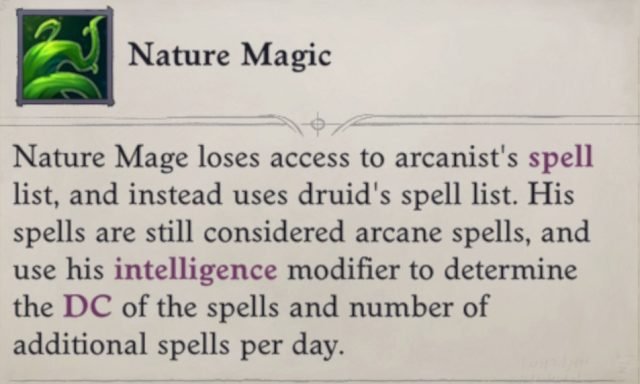
Nature Mage is an Archetype of Arcanist that lets them use Druid Spells instead of Arcanist ones using Intelligence instead of Wisdom to cast them.
Conversely, the Brown-Fur Transmuter Archetype of Arcanist simply empowers Transmutation Spells, while sacrificing a few Arcanist Class Features. And though this does change the way you play Arcanist, it’s not nearly as significant of a change as the Nature Mage.
So look over the Archetypes carefully of the 1 or 2 Classes you’ve narrowed things down to and see if anything jumps out. Don’t be afraid to try one out, and start over if you decide it’s not the one for you. Maybe your first choice was close to what you want, but not exactly, and there’s no shame in that.
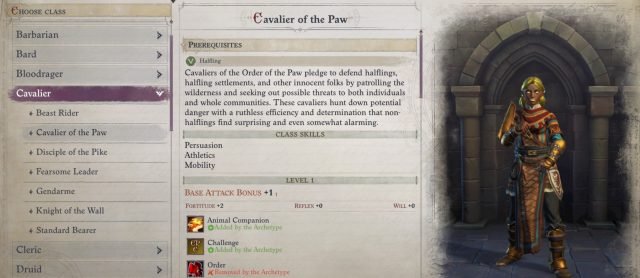
Don’t be afraid to try out a couple Archetypes until you find the one you like.
Beginner Class Recommendations Pathfinder Wrath of the Righteous
In this section I’d like to provide you with some of the Classes that I think are rather easy to play, or are a lot of fun for a new player. I’ll try to factor in the new Classes from Wrath of the Righteous that were not present in Kingmaker as well, so you can get the full experience.
Martial Class Recommendations
Martial Classes are those that almost exclusively rely on Weapons for their damage, with little or no Magic use. A few Martial Classes I think are great to play, and not too hard to learn are: Cavalier, Fighter, Ranger, and Slayer.
Cavaliers excel at Mounted Combat, so if you like to ride a giant beast around and smack things in the face, then this might be the Class for you. Cavaliers are not particularly good at Ranged Combat, so you’ll be playing almost exclusively melee when playing one. They do, however, offer a modest amount of buffs you can enhance your group with, so they do have some Support capabilities.
Fighters are well-rounded warriors who can attack from range or in melee combat. Depending on how you set yours up, you can be full melee, full range, or a mix of these two. They also have excellent Defense, making them hard to kill while still dealing out decent damage. They can also fulfill the Tank role, if you don’t have one.
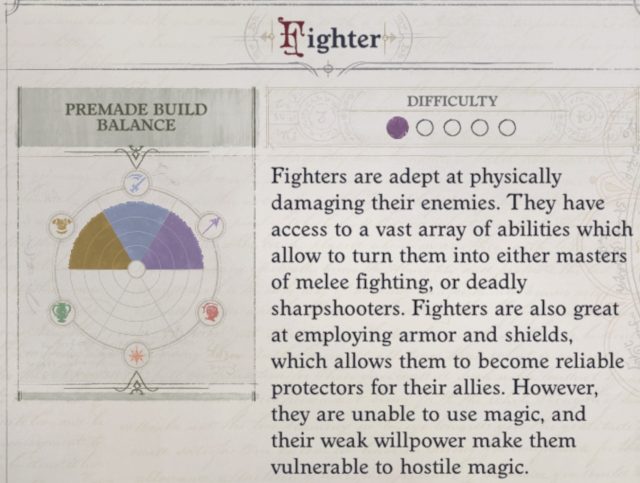
Fighters are just good all around, and they can be ranged or melee.
Rangers share a lot in common with Fighters, and they can excel at Ranged or Melee Combat as well. Depending on how you set yours up you can specialize in one type, or be decent at both, just like the Fighter. However, Rangers can also gain an Animal Companion, just like Cavaliers which can assist them in combat.
Slayers excel at both Ranged and Melee Combat, allowing you the flexibility to choose how you want to play. They deal Sneak Attack damage, just like the Rogue Class, but they also gain Slayer Talents providing them even more benefits. They study their target and deal increased damage against them, making them fantastic against hard to kill enemies.

With a 1 difficulty, you want have any trouble learning this Class.
Mage Class Recommendations
Mage Classes are those that cast some type of Spells, whether it’s offensive, defensive or healing, Mages cover all of these Classes. Some Classes I think are generally fun to play that fall under this category are: Arcanist, Druid, and Sorcerer.
Arcanists are similar to Sorcerers and Wizards and have a similar Spell List to these two Classes. However, they have a Class Feature that lets them use “Spell Like” Abilities, called Arcane Exploits that provides them with more ways to damage their enemies. Arcane Exploits can also increase their Armor Class, or allow them to Teleport and cast a Spell in the same turn. If you like a little more variety than just a straight forward spell caster, give Arcanist a try.
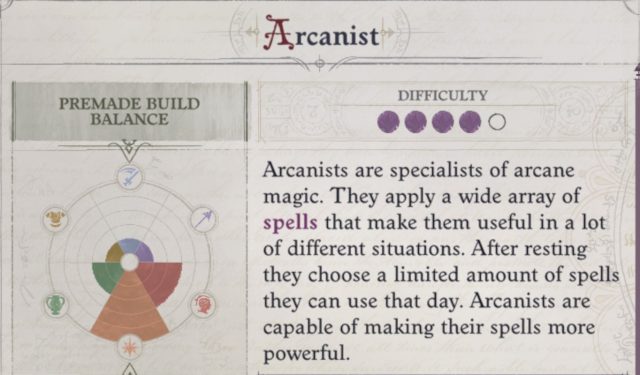
Try not to let the 4 difficulty scare you. Nearly every spell caster in the game has a 4 or higher, and this Class is not that tough to learn.
The Druid Class is one of the less complicated Spell Casters in Wrath of the Righteous, but it has a lot it can do. They excel at Summoning and they often have an Animal Companion that can assist them. They can also transform into animals if they wish, allowing them to melee effectively on the battlefield.
Sorcerers are pretty straight forward Spell Casters, but they do have something special about them that sets them apart from others, and that is a Bloodline. If you’ve ever wanted to sprout wings and turn into a dragon, while flinging spells in between transformations, you may enjoy this class. There are several Bloodlines to choose from, and it can be difficult to pick one, but it’s what makes this Class so unique and interesting in my opinion.
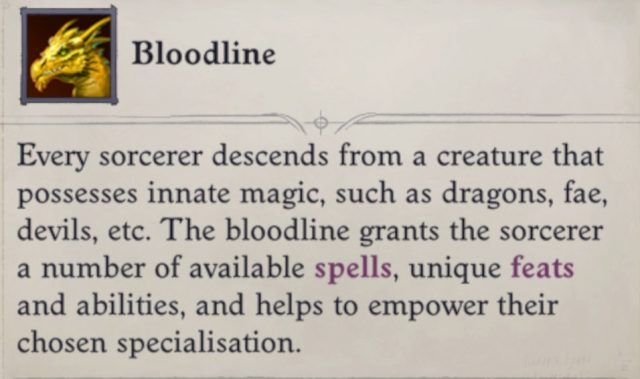
Choosing a Bloodline is tough to do, and can take you awhile, but after that the Sorcerer Class gets much easier.
Hybrid Class Recommendations
Hybrid Classes are those that mix Spells and Martial Abilities together to create a Class that does a bit of each. Some Classes I think you might enjoy are: Paladin, Magus, and Bloodrager.
Paladins, believe it or not, can cast Spells, but they don’t gain them until several levels in to the game, and they don’t gain very many. Still they are a sort of hybrid Class that excels in melee combat, and one that can heal itself and allies in addition to dealing damage or tanking. Paladins are exceptionally strong characters, and if you’re looking for a blend of melee, healing & buffs, and some spells then they are a great option.

Paladins are not hard to learn and have a bit of everything.
Bloodragers are essentially a mix of Barbarians and Sorcerers. Not only do you get to select a Bloodline, but you can Rage just like a Barbarian, and at later levels you can buff yourself with Sorcerer spells by activating Bloodrage. You’ll use less offensive Spells than a Magus if you select this Class, but you’ll be able to buff yourself substantially. You can play Barbarians ranged or melee, so there is some flexibility here.
Magus are a mix of melee and offensive magic that is very unique. Not only can they buff their Weapon’s damage via their Arcane Pool Class Feature, they can also imbue some of their weapon attacks with Spells, allowing them to cast a spell and attack in the same turn. They can also wear some Armor while casting, making them harder to kill.
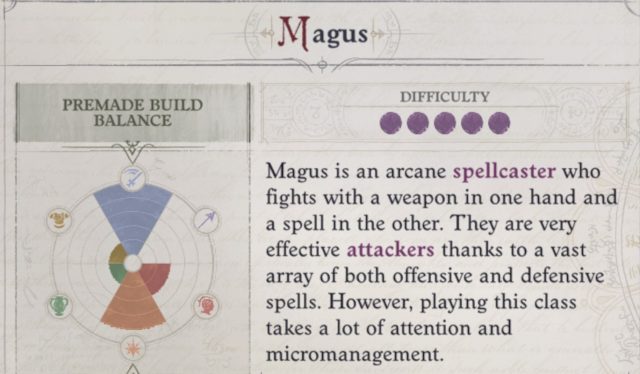
Arguably one of the most interesting Classes in the game, it can take quite awhile to master. However, if you’re interested in some unique gameplay, you’ll want to check out this Class.
Multiclassing & Prestige Classes in Wrath of the Righteous
Multiclassing is not something you should be super concerned with as a new player, and putting it out of your mind is a good idea until you become more familiar with Pathfinder Wrath of the Righteous. Many Classes get more powerful by taking levels in that specific Class, and when that stops happening you can accidentally gimp your character. Additionally, you’ll stop gaining more powerful Spells if you originally chose a Spell Casting Class and you start taking levels in another Class.
It’s much better to find the Archetype that fits your needs instead, until you have a better handle on things. Multiclassing is a ton of fun, but it’s very hard to get right without a decent understanding of game mechanics, which might take a while.
Similarly, Prestige Classes are essentially other Classes you can select, but they have specific requirements that must be met before you can choose them. Without some prior planning, you might not meet the requirements for the ones that fit best with your Build, and it’s hard to plan if you are new.
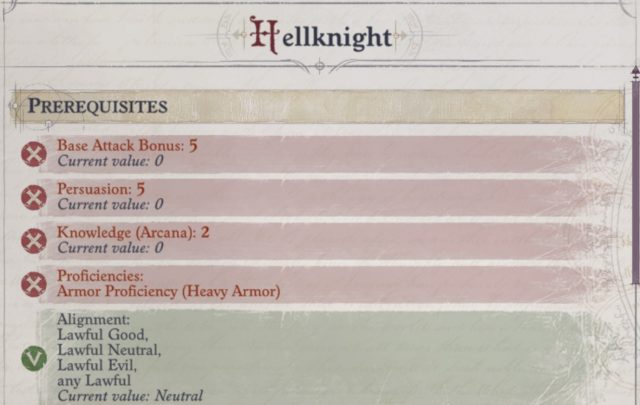
Planning ahead for these Classes helps tremendously, but using one is not advised if you are new to the game.
The same problem with Multiclassing applies to Prestige Classes as well, so you have to make sure you are gaining more than you are losing by selecting one. Some Prestige Classes still count towards your first Class when it comes to your Spells, however, making this less of a negative in some cases.
Still, I advise against worrying about Prestige Classes until you’ve played the game a decent amount. Games like Pathfinder Wrath of the Righteous are meant to be played many times, not only because of different story related options, but also because of the enormous amount of Class variety and potential party setups with various Companions.
Final Thoughts
Character Creation in Pathfinder Wrath of the Righteous can take you a long time, if not hours, and it’s quite fun to theory craft new Builds and ideas. However, getting into the game world and gaining some real knowledge and experience will go a long way towards making your future Builds better, so don’t take too long before giving something a go.
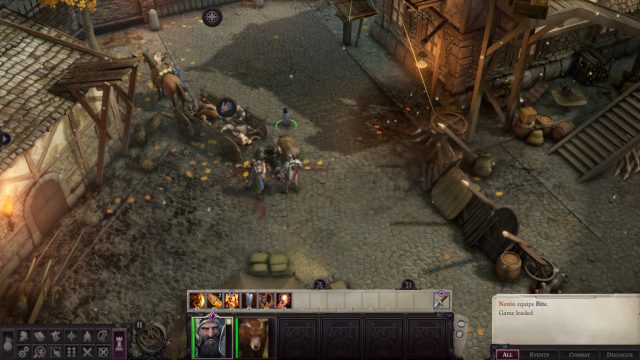
There is no substitute for getting in there and just playing.
I’ve made some recommendations of Classes I think are fun and not overly complicated to learn, and I advise you give one of these a whirl if you’re new or are looking for something a little bit different than just a “Wizard” or a “Rogue”. I’ve tried to suggest Classes that were not present in Kingmaker where I could, so that you can fully take advantage of one of the best parts of Wrath of the Righteous.
Narrow down what you want to play between a couple of Classes, and look for Archetypes that sound interesting and give one of those a try. Some trial and error may be needed here, but this should help put you in the ballpark.
Stay tuned for more Pathfinder Wrath of the Righteous Guides, including Builds, and be sure to check out the Official Pathfinder Wrath of the Righteous Wiki if you have more questions about the game!
Fextralife
Source link
Related Post:
- Cavalier Build | Pathfinder Wrath of the Righteous Class Guide
- Arcanist Build | Pathfinder Wrath of the Righteous Class Guide
- Top RPG News Of The Week: August 15th (Diablo 2, Pathfinder Wrath of the Righteous, Tales of Arise and More!)
- This week in PC Gaming: Pathfinder: Wrath of the Righteous, Lake, and Pax West
- Pathfinder Wrath of the Righteous Beginner’s Guide: Tips and Tricks to Survive
- Top 5 Upcoming RPGs Of September 2024 (Diablo II Resurrected, Pathfinder Wrath of the Righteous, New World and More!)
- Pathfinder Wrath of the Righteous Review | A Colossal CRPG
- Camellia Pathfinder Wrath of the Righteous | Companion Build Guide
- Seelah Pathfinder Wrath of the Righteous | Companion Build Guide
- Lann Build Pathfinder Wrath of the Righteous Guide
